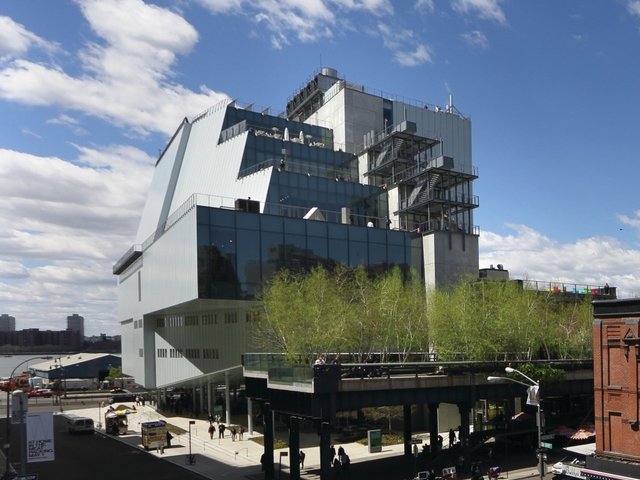For its 2017 Biennial, the first in its new and larger downtown home, the Whitney Museum of American Art has appointed two young curators: Christopher Y Lew (aged 34) and Mia Locks (aged 32).
“Even though we’ve become a bigger institution, it’s really important to foster a spirit of risk and experimentation. With our move downtown, there’s a sense of embracing of the new—we don’t just want to be hidebound to curators because they have really long resumes,” says the Whitney’s chief curator and deputy director for programmes, Scott Rothkopf (aged 39). “I feel very optimistic about having such young curators.”
Lew, an associate curator at the museum, will provide a “strong Whitney voice”, Rothkopf says. “For the last biennial in our former building, we had an open house concept where we invited three curators from outside the institution to each do a show on their own. We didn’t want to be nostalgic about leaving that building, but it was important to me that, in our new downtown home, the biennial have a definite Whitney spirit,” he says.
If Lew’s track record is anything to go by, we can expect a focus on emerging artists. He is leading the Whitney’s renewed focus on young artists, starting with a trio of shows dedicated to artists born in the 1980s. Two of these have opened already, for Rachel Rose (until 7 February 2o17) and Jared Madere (until 3 January 2016), while an exhibition of Sophia Al-Maria’s work is scheduled for next summer. He also co-organised the first US theatrical presentation by the Berlin-based New Theatre, which was at the Whitney for a week this October.
Both he and Locks worked at MoMA PS1, and briefly overlapped there. “My interest in working with Mia came from conversations we would have as former colleagues, and from the exhibitions she has done recently, as well as her intimate knowledge of the LA scene,” Lew says.
Locks brings to the table a more historical approach: as part of the Getty’s Pacific Standard Time Initiative in 2012, she was the co-curator of Cruising the Archive: Queer Art and Culture in Los Angeles 1945-80. At PS1 she has recently organised solo artist shows on the South Korean Im Heung-soon and the American Math Bass.
Looking beyond borders Unlike many Manhattan-based survey shows of contemporary art, the next biennial will not be New York-centric. “There are so many strong communities of artists in the US, and we want to think beyond the usual cities,” Lew says.
Rothkopf adds that the curatorial team is interested in thinking about “artists who cross borders”, whether Latin America or elsewh ere. “In general, one of the themes of the museum since we opened downtown has been to think more broadly about what American art means in an international context—our opening show included artists who were born elsewh ere but lived here, like Carmen Herrera and On Kawara,” he says.
Adding to the mix—in what Rothkopf calls an “interesting twist”—is the team of advisors who will be working on the show. Lew and Locks “wanted to have a group who are formally acknowledged as part of the curatorial structure—we haven’t done that in a while,” Rothkopf says.
The four-person team is “eclectic and diverse”, he says. It includes Negar Azimi, a senior editor at the Middle-East focused magazine, Bedouin; Gean Moreno, the artistic director of the Miami-based non-profit, Cannonball, which aims to further critical discourse; Aily Nash, the film and media curator at Basilica Hudson and the co-curator of Projections, the New York Film Festival’s section for artists’ films and videos; and the publisher Wendy Yao, who also founded both the LA exhibition space 356 South Mission Road (a collaboration between Yao, gallerist Gavin Brown and artist Laura Owens) and Ooga Booga, an independent clothing, book and music store.
“The team we have brought together are all engaged with contemporary art in this moment, but they all have strengths that go beyond art into other disciplines,” Lew says. “None of them are tied to institutions—we are reaching for minds that are thinking in ways that museums are not. It speaks to the mindset of a younger generation that you don’t necessarily have to be tied to an institution to do the things you want.”


